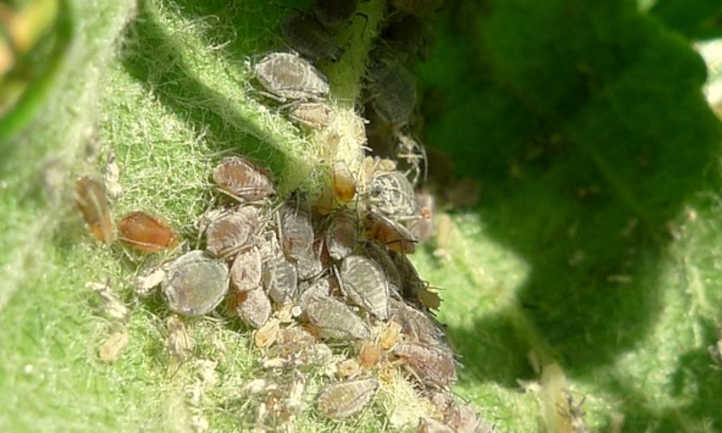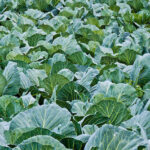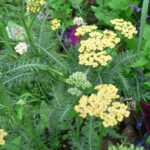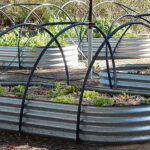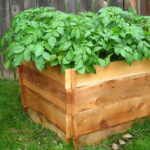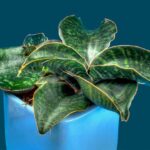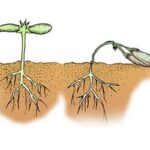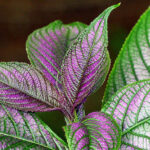Aphids suck! Literally, they are sapsuckers. They’re one of my least favorite parts of gardening. They have strength in numbers, and they gross me out. They eat plants that have taken a long time to grow, and they can do a lot of damage quickly.
One thing I’ve come to realize, though, is that aphids are an inevitability in the garden to some extent. Love them or hate them, they’re around. That’s why my goal for aphid control is to keep the damage as minimal as possible, in the hopes that my efforts will help me get rid of aphids.
Because they’re inevitably hanging out everywhere they can, I know it’s not the end of the world when aphids show up. That means I’m doing something right, to some extent. But let’s talk about aphids and how you can identify and control aphids in your garden, so your healthy plants stay that way.
Subscribe to the Epic Gardening Podcast on
Aphid Overview
| Common Name(s) | Aphids, plant lice, greenflies, blackflies, rose aphids, potato aphids, bean aphids, cabbage aphids, green peach aphids, wooly aphids, wooly apple aphids, melon aphids, lettuce root aphids, plus many more |
| Scientific Name(s) | Over 4400 species (250 harmful to agriculture/forestry). |
| Family | Aphididae |
| Origin | Worldwide, but prefer temperate zones |
| Plants Affected | Most food crops (excepting garlic and chives), fruit trees, roses, and other flowering plants. |
| Common Remedies | Insecticidal soap, neem oil or other horticultural oils, Beauveria bassiana, cultural controls such as good maintenance or reflective mulches, biological controls such as lady beetles, lacewings, or predatorial wasps, and as a last-ditch effort, spinosad, pyrethrin, or diatomaceous earth |
What Are Aphids?

Aphids are sometimes pear-shaped, soft-bodied insects with piercing, sucking mouthparts that feed on basically any nearby plants. They are members of the family Aphididae, which contains 4400 species, with about 250 species that are damaging to plants. Their colors vary widely and sometimes emulate the color of the plants they favor. Most species are specialists in this way – meaning, they feed on one particular genus or species of plants. A few species are generalists and feed on anything they see. Most adult aphids don’t have wings, but a few species do. They congregate in large masses and feed on all parts of the plant. Most species you’ll find in your yard like to gather and feed on the undersides of leaves.
Types Of Aphids
Since there are so many aphid species out there, we’re going to cover a few of the most common here. This will help you determine which aphid populations you’re dealing with and help you locate the best tools to control aphids overall.
Bean Aphid: Feed on legumes, various woody ornamental plants, and flowers. Adults have black pear-shaped bodies with yellow legs and three black cornicles protruding from their abdomen. Nymphs are dark brown to black.
Cabbage Aphid: Consume cole crops and other mustard family plants. Adult cabbage aphids and nymphs have a pear shape and a chalky-grey, mealy appearance. Some nymphs are yellowish.
Green Peach Aphid: Consumers of peppers, spinach, tomato, cucurbits, carrot, lettuce, legumes, corn, flowering plants, flowering plum, and stone fruit. Adult green peach aphids and nymphs are khaki-colored. Adults have 1 protruding cornicle emerging from the center of the abdomen.
Melon Aphid (aka Cotton Aphid): Ingest plant sap from cucurbits, carrot, citrus, many flowers, and various woody landscape ornamentals. Adult melon aphids and young aphids are varying forms of light green and dark green, with nymphs tending toward the yellow side of the color gradient. They are pear-shaped.
Potato Aphid: Snack on potato, spinach, lettuce, tomato, and many other plants. Adult potato aphids and nymphs have an elongated body that comes to a point at the end of the abdomen. Nymphs are orange, and adults are bright green.
Pea Aphid: Pea aphids feed on pea, clover, alfalfa, and broad bean. Adults and nymphs are bright green and ridged. They slightly resemble katydids. Mature versions have two cornicles on either side of a thicker cauda. Their bodies are elongated. Sometimes mature male members of this aphid population are winged aphids, with accompanying wingless females.
Green Apple Aphid: Feed on apple, pear, hawthorn, and cotoneaster. Adults and nymphs are light green, and slightly translucent. Adults have 3 distinct black cornicles at the back of the abdomen.
Leaf Curl Plum Aphid: Plum and prune are the primary food sources for these woolly aphids. All forms have a waxy, light green body with black legs and antennae. Colonies curl leaves and move to Asteraceae plants in summer.
Mealy Plum Aphid: Also feed on plum and prune. Adults and nymphs are chalky-grey and mealy-looking. Colonies curl and stunt leaf growth. They move to cattails and reeds in summer.
Rosy Apple Aphid: Consume apple. Adults and nymphs are blackish-grey and ashy in appearance. Some have distinct white bands behind their heads. They curl leaves and head to plantain in summer.
Woolly Apple Aphid: Ingest apple, pear, pyracantha, and hawthorn. Mealybug lookalikes that have a fuzzy white appearance. These woolly aphids are primarily found on wood or roots, and create galls in roots and waxy deposits.
Ash Leaf Curl Aphid: Feed on ash trees. They are white, slightly woolly, and wax-covered. They cause curling leaves, distortion, and form pseudo-galls.
Crepe Myrtle Aphid: Crape myrtle is the primary food source. They are a light yellowish-green with several brownish spots along their bodies. They spit honeydew down as they feed. Trust me. I’ve been splashed a time or two.
Giant Conifer Aphid: Eat fir, pine, spruce, and cedar. Bodies are pear-shaped, and stark, opaque black. Legs are brown, and the side of their bodies have white markings on them. May be mistaken for ticks due to similarities in appearance.
Hackberry Woolly Aphid: These intensely fuzzy aphids feed only on hackberry. Hackberry woolly aphids are slender and there are two pronounced cornicles at the end of the abdomen. They produce waxy tufts.
Oleander Aphid: Feed on oleander and milkweed. They are bright orange, pear-shaped, and have black legs.
Rose Aphid: Consumers of rose. Adults and nymphs range in color from orangeish red to yellow. Bodies are elongated, slightly chalky, and ridged.
Tuliptree Aphid: Feed on tuliptree. Bodies are elongated, pale yellow to pale green. Legs are slightly green fading into black.
Life Cycle of Aphids
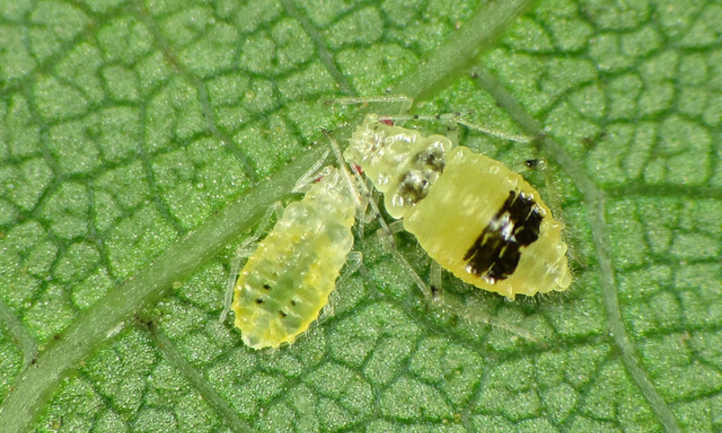
Aphid reproduction is largely asexual, with multiple generations being born per year. High aphid numbers in moderate climates are generally the result of live birth by adult female aphids via parthenogenesis, at rates of around 80 offspring per week in active seasons. Immature aphids are called nymphs. Nymphs go through at least a few cycles of shedding their skin, usually four, before they become mature aphids.
While most aphid species reproduce asexually, some colder-climate species mate and lay eggs in fall or winter. This helps overwintering eggs develop hardiness to survive more intense elements in the absence of leaf tissue on their preferred host plant. At this time some females lay eggs on one host plant and move to another when the weather warms. Many aphids multiply quickly and can move from nymph to adult in 7 to 8 days. This is why aphid colonies are so large.
Identifying Aphid Damage And Their Habitat
Aphids tend to live where they eat, and what they eat depends on the species of aphid. They can be found on most fruit and vegetable crops, on some flowering plants like roses or chrysanthemums, on trees, and in some bushes. Often, the wingless aphids remain hidden on the underside of leaves, but it’s very easy to spot a large infestation as they’re clustered together in large quantities.
While a small amount of aphid damage may not cause a lot of problems in the garden, infested plants can experience leaf curl and yellowing. Some aphid feeding can stunt plant growth. There is a secretion called honeydew produced as aphids feed. Honeydew secretions can cause sooty mold on plants.
Some species inject toxins into plants as they feed, which further distorts and eventually destroys leaves. While most aphids tend to feed on leaves and shoots, there are root aphids. Lettuce root aphids, for instance, feed on underground parts of lettuce plants causing them stress and creating conditions for full lettuce head dieback. In fall, lettuce root aphids move to poplar trees where each overwinters and causes leaf galls on the tree in spring. Other aphids that feed on crowns and roots may cause root veggies to lose their tops when pulled.
Aphids As Disease Vectors
One of the most important reasons aphid control should be a priority in your garden is they are sometimes vectors for plant viruses. Look out for an aphid attack on squash, cucumber, pumpkin, melon, bean, potato, lettuce, beet, chard, and bok choy. These are the plants where aphids infesting could mean the beginning of a viral disease.
Viruses transmitted by aphids cause mottled and curling leaves, as well as stunted plant growth. Because the viruses spread by aphids transmit in just a few minutes, prevention is key. It takes longer to control aphid populations with insecticide than it does for viral transmission to take place.
Many of the diseases that aphids are vectors for have no cure, such as mosaic viruses.
Controlling Aphids
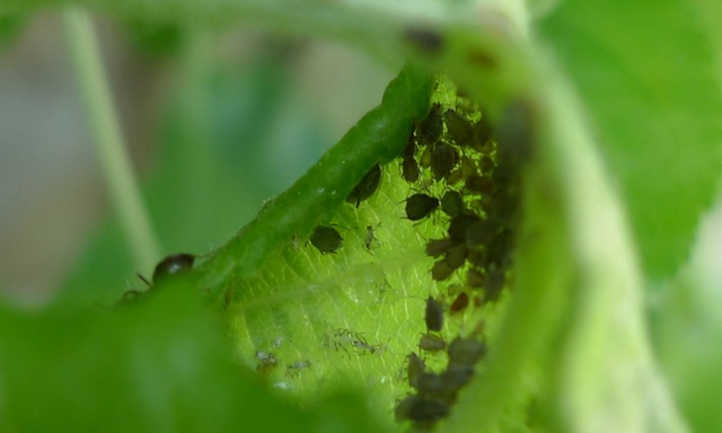
We have a great video on controlling aphids featuring Kevin (see above!), but we’ll cover that here in text format too. We recommend using an integrated pest management regimen when it comes to aphids because one method just won’t be enough to keep them at bay. Another important part of controlling aphid populations is monitoring your plants. Ensure you are inspecting them daily.
Cultural Control
The first mode of control you should take to get rid of aphids should be cultural methods. Before you reach for sprays and insecticides, focus on mechanical methods of control. If you see aphids congregating in leaf crevices, use a sharp knife or a pair of quality Felco 2 pruners to remove the entire leaf and destroy it. Alternately, hit them with a strong spray of water from a garden hose with a nozzle set to the cone or flat setting. As the water hits them, their mouthparts tear off, and they fall off the plant and die.
Keep the garden clear of plant debris which is where aphid eggs and hatched aphids overwinter. Consider using reflective mulch to repel aphids, as the shiny surface makes it difficult for winged forms to find plants. This will not only repel aphids but control weeds near where aphids may congregate.
Biological Removal Of Aphids
Get rid of aphids by employing their natural enemies. Aphid predators like adult lady beetles, lacewings, and parasitic wasps eliminate aphids and or consume them as a food source. Predatory mites also feed on aphids. Note that broad-spectrum pesticides will kill aphids, but they’ll also kill other insects, including beneficial insects.
Instead of broad-spectrum pesticide applications, provide an environment that will draw in beneficial insects that feed on aphids. Purchasing lady beetles or other insects may be possible at a nearby nursery, but they won’t be effective without the right environment. This also may not be the most sustainable or ethical source for these insects.
Parasitic wasps (particularly Aphidius coleman) are predatory insects that will come to your garden through encouragement by planting host plants like yarrow, Queen Anne’s lace, fennel, and dill. They’ll then lay their eggs inside of aphids, which become mummified as the egg hatches and the larval wasp feeds. As you’re monitoring the progress of these wasps, know that finding the aphid mummies that result from the feeding means that aphid populations are about to reduce significantly.
Natural enemies of aphids include syrphid fly larvae, also known as hoverflies. The larvae of these hoverflies prey on newly hatched aphids as well as adults. By thinking of natural predators and the natural enemies of aphids in your garden, and planting plants to increase your beneficial insect population, you’re off on a good foot for using biological control agents to eliminate most aphids in your garden.
One of the most important biological controls is ridding your garden of ants. While ants, in general, aren’t the worst thing to have in your garden, ants feed on the honeydew aphids secrete. They are the opposite of natural enemies when it comes to aphids. Control ants, and you’ll also control aphids. As you monitor your plants for aphids, look for ants as a sign they’re around and check the undersides of leaves to see if the ants are harvesting aphid honeydew and perpetuating their life cycle. The presence of that honeydew on your plants will promote the development of sooty mold, too. We have a piece on ways to control ants that will help you determine the best strategy.
Insecticidal Removal Of Aphids

Kill aphids with commercial formulations of insecticidal soaps, neem oil, or horticultural oils. Make sprays your last vector of control, as they can sometimes damage plant tissue and deter beneficial predators.
Neem oil, other horticultural oils, and insecticidal soap can be sprayed once every 7 to 10 days until the problem subsides. Spray them before the sun rises and at dusk. If you don’t have formulated insecticidal soap, try a little bit of Castille soap with water in a spray bottle, although we highly recommend getting a true insecticidal soap.
Whatever you do, do not use dish soaps, as they can cause significant damage to plants. That’s because they contain more than just fatty acids that Castille soap contains in their formulation. Horticultural oil is a bit stronger than neem oil or insecticidal soap and should be applied with caution. For all spray types, wear gloves and eye protection as well as a face mask to prevent accidental inhalation, and don’t apply a spray in high wind conditions.
Beauveria bassiana is a fungus that when consumed by aphids causes white muscadine disease that eliminates aphid populations. This can be purchased in a spray formulation, making it a combined biological and insecticidal measure.
After sprays like neem oil, insecticidal soap, horticultural oil, or Beauveria bassiana, there are still a few options that may work.
Diatomaceous earth is another treatment that gets plants dusty, and the fine dust is good at scratching up the soft bodies of aphids that are there and preventing others from attacking plants. However, if it rains or if it’s windy you’ll have to reapply. Spinosad spray and pyrethrin spray should be your last-ditch effort. They’re not as efficacious because aphids don’t feed deeply enough into leaf tissue for them to be effective on their own; these are meant more for chewing insects who will ingest the surface tissue. All of these latter methods require more effort than they’re sometimes worth, so wait to use them until other methods have failed.
Preventing Aphids
Aside from planting those plants that natural predators of aphids will flock to, you can do things to prevent aphids altogether. Ensure you have good soil conditions before planting crops. Either test your soil and amend it appropriately or plant cover crops. Using too much fertilizer will lure aphids into your garden, where they get to feasting. Providing adequate and consistent amounts of water helps too. If you know aphids are around, provide new seedlings with a row cover to prevent them and any potential diseases. Overall, prevention is most effective when you create a solid foundation for your growing plants.
Frequently Asked Questions
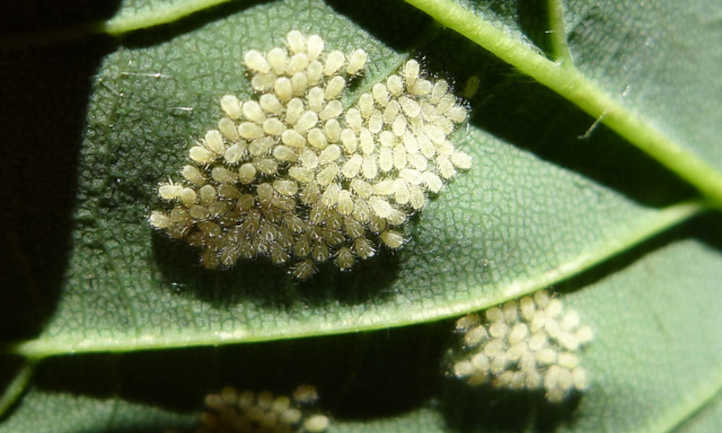
Q: Are aphids harmful?
A: To plants, yes. They suck the sap from plants and can spread viruses in the process. They’re not as harmful to humans, affecting only yields and hurting my feelings when they show up in the garden.
Q: What causes aphid infestation?
A: Most aphids attack weakened and stressed plants that don’t have base cultural conditions for thriving. These could be healthy plants overall, but even a little bit of stress can lure in an aphid or 100.
Q: Can aphids bite humans?
A: Aphid mouthparts are too small to bite human skin. They stick to sucking on plants.
Q: My plants have curled leaves after aphids are gone! Help?
A: Unfortunately, even after you’ve figured out how to kill aphids and eliminated the pest, the curled leaves are likely to remain. If this is a plant such as Swiss chard or another leafy vegetable, there’s not much you can do to restore the shape of the leaves, although you can certainly try to encourage new leaf growth. If it’s on a non-edible leaf, leaving the leaves intact is okay, as they’ll continue to photosynthesize. But for visual purposes, you can trim the most curled leaves off as long as there are plenty of other leaves left to keep the plant alive.
Q: Do aphids jump?
A: You might be mixing up aphids (which are occasionally called whiteflies) with true whiteflies. True whiteflies are also called “jumping plant lice”, which is even more confusing as aphids are often called “plant lice”. Aphids themselves do not typically jump, although they do crawl (and in limited situations may be able to fly). So no, aphids don’t jump!

